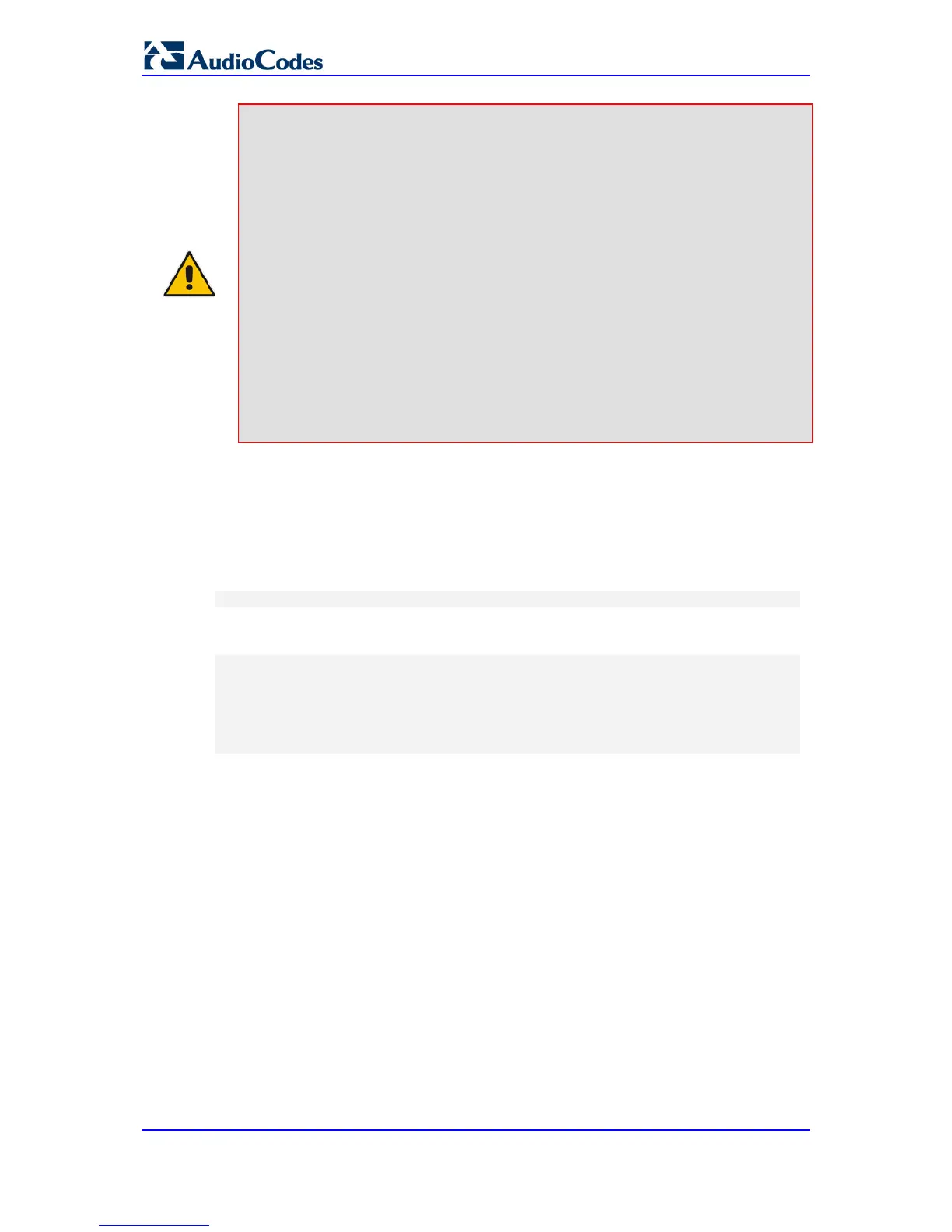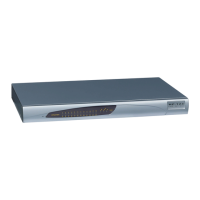Notes:
• The Dial Plan file must not contain overlapping prefixes. Attempting to
process an overlapping configuration by the DConvert utility results in an
error message specifying the problematic line.
• The Dial Plan index can be selected globally for all calls (as described in
the previous procedure), or per specific calls using Tel Profiles.
• It may be useful to configure both Dial Plan file and Digit Maps. For
example, the Digit Map can be used for complex digit patterns (which are
not supported by the Dial Plan) and the Dial Plan can be used for long
lists of relatively simple digit patterns. In addition, as timeout between
digits is not supported by the Dial Plan, the Digit Map can be used to
configure digit patterns that are shorter than those defined in the Dial
Plan or left at default (MaxDigits parameter). For example, the “xx.T” digit
map instructs the device to use the Dial Plan and if no matching digit
pattern is found, it waits for two more digits and then after a timeout
(TimeBetweenDigits parameter), it sends the collected digits. Therefore,
this ensures that calls are not rejected as a result of their digit pattern not
been completed in the Dial Plan.
31.1.3.2 Obtaining IP Destination from Dial Plan File
You can use a Dial Plan index listed in a loaded Dial Plan file for determining the IP
destination of Tel-to-IP and IP-to-IP calls. This enables the mapping of called numbers to
IP addresses (in dotted-decimal notation) or FQDNs (up to 15 characters).
In the Dial Plan file, the syntax of the Dial Plan index for this feature is as follows:
<destination / called prefix number>,0,<IP destination>
Note that the second parameter "0" is ignored.
An example of a configured Dial Plan (# 6) in the Dial Plan file is shown below:
[ PLAN6 ]
200,0,10.33.8.52 ; called prefix 200 is routed to destination
10.33.8.52
201,0,10.33.8.52
300,0,itsp.com ; called prefix 300 is routed to destination
itsp.com
Once the Dial Plan is defined, you need to assign it (0 to 7) to the routing rule as the
destination in the 'Destination Address' field, where "0" denotes [PLAN1], "1" denotes
[PLAN2], and so on. You also need to set the 'Destination Type' field to Dial Plan. These
settings are done in the relevant routing tables:

